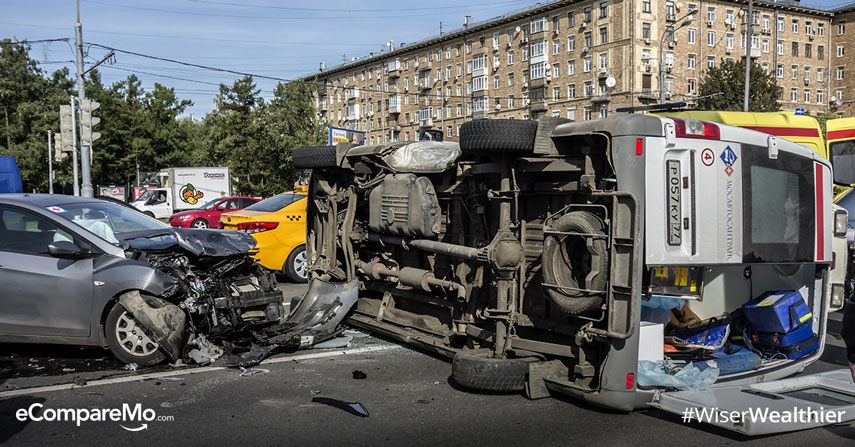What To Do If You Get In An Accident With An Emergency Vehicle
3 min readIn an ideal world, the sound of a siren means that all vehicles will immediately give way to an emergency vehicle. Whether it’s a police cruiser, ambulance, or firetruck, people must yield and make sure the emergency car has enough room to smoothly pass.
However, with so many private vehicles having installed blinkers and accessories to mimic emergency vehicles, many people are now skeptical if these emergency warnings are for real. Also, many cynically dismiss a “wang-wang†as just another abuse perpetrated by government officials who don’t want to be bothered by having to follow road rules. Unfortunately, this somewhat skeptical disregard for emergency signals can lead to accidents between passenger vehicles and genuine emergency vehicles.

What happens then when you get in a car crash with an emergency vehicle?
Unlike a fender bender with a normal car, accidents involving an ambulance or a police car can be a special case, especially if they’re rushing towards a situation in dire need of assistance.
Move out of the way and stay out of the way
When people see blue and red flickering lights and hear the blaring siren of an approaching emergency vehicle, the proper thing to do is to drive towards the side of the road, pull over, and stop till the emergency vehicle has safely passed.
According to Denmark Cristobal, marketing officer for Oriental Assurance Corporation, private car owners should be more careful when there are emergency vehicles behind them, saying that they should safely pull over to the side and give way to oncoming responders.
In addition to stopping, you should only resume normal driving once all emergency cars have passed. Every consideration should be given to them since they need to rush to a situation that requires their immediate attention.
“The person driving is expected to have exercised more prudence and precaution in avoiding the accident with the emergency vehicle,†says Cristobal. If you get in an accident with them, he adds that “there is not much difference.â€
Who is at fault?
Like normal car accidents, whoever shows gross negligence on the road such as disregard for traffic rules or endangering other motorists leading to a crash is the one at fault in an accident. This also applies to drivers of emergency cars like an ambulance or police cruisers.
“Generally, emergency vehicles are liable when they have become negligent and fail to exercise proper care and precaution. They are immune when the other vehicle is the one that has become negligent and responsible for the accident,†Cristobal says.
“Emergency vehicles get only slightly special consideration in that there is a presumption of innocence on their drivers’ part while there is a presumption of guilt or negligence on the part of the other driver. Other factors remain the same, such as appreciation of proof and evidence as well as circumstances of the accident.â€
In case of a car accident with an ambulance, Cristobal says that regardless who’s at fault, people should extend urgent assistance to injured patients and refrain from obstructing the emergency vehicle from responding or rushing an injured person to the hospital.
What happens then when there are threats of legal action involved? If you have comprehensive car insurance, you can ask if they also provide legal assistance as part of their nonstandard inclusions. Some insurers offer legal support to their clients if they get comprehensive car insurance coverage with them.
“To fully assist our customers in case of a car accident, of course we provide legal defense, not just assistance is part of the coverage of the motorcar insurance policy. Bail bond, however, is not covered and is for the account of the driver. This bond is refundable upon the resolution of the case,†Cristobal explains.
